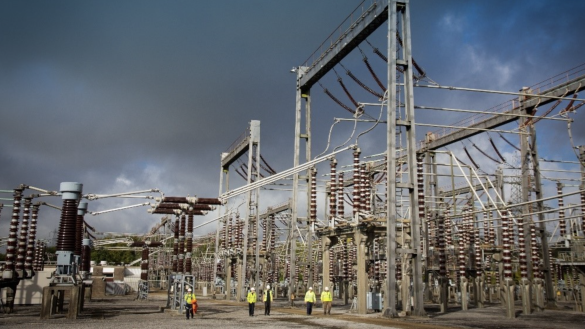Developing near overhead lines or substations
Are you considering building or developing near a substation or overhead line?
You may be a homeowner considering an extension, or you may be considering developing a brownfield or greenfield site. If your development is near a substation or overhead line, what are the issues you need to consider?
For electrical assets, National Grid does not authorise or agree safe systems of work with developers and contractors. However, National Grid will advise on issues such as electrical safety clearances and the location of towers and cables. National Grid also works with developers to minimise the impact of any of its assets that are nearby.
You can find out more about the basic safety and location of National Grid’s assets by downloading the guidance document for working near electricity equipment.
Safety clearance distances
If you are building near an overhead line, you must preserve the voltage safety clearance distances (refer to the guidance document), both for the finished development and during construction (e.g. for scaffolding or cranes). If the development is near a substation, you must be very careful about buried cables.
Contact the relevant electricity company at an early stage and talk to them.
EMFs
Your development will also need to comply with the relevant exposure limits for electric and magnetic fields (EMFs) In most cases, this will automatically be the case. For any questions beyond the information here:

How a planning authority should handle an application
A planning authority receiving an application needs to be satisfied it complies with the safety clearance distances and with the EMF limits.
There are no other restrictions on development near power lines, and a planning authority should not introduce restrictions.
How can a planning authority satisfy itself about compliance?
As set out above, the vast majority of substations, and all overhead lines at 132 kV or below, are inherently compliant with EMF exposure limits. The relevant Code of Practice sets out that the evidence for this is provided centrally and planning authorities should rely on this and should not require any additional information in individual cases.
For 275 kV and 400 kV lines, these are nearly always compliant with EMF exposure limits too. However, in these cases the planning authority would be entitled to ask for evidence specific to a particular application. This applies only if the development is directly under the conductors - even just a few metres to the sides, compliance is ensured without needing specific evidence.
Statement of compliance with public exposure limits
The button below takes you to a formal statement of compliance by the UK electricity industry for all equipment used on UK electricity networks with the EMF public exposure limits in force in the UK. This includes explanations of why technologies are compliant, and certificates of compliance.